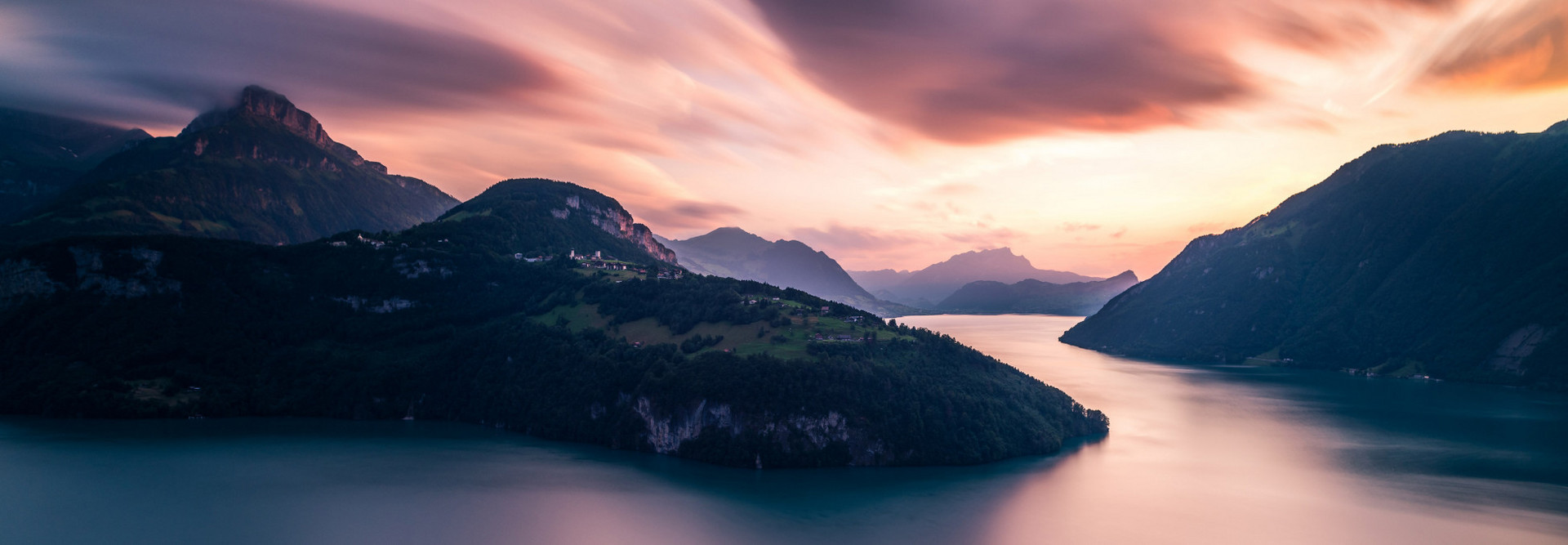

A real treat for explorers and connoisseurs
Grandiose natural scenery!
The wonderful Alpine landscapes of Central Switzerland form the scenic backdrop to Lake Lucerne. Such world famous peaks as Mount Rigi, Mount Pilatus and the Stanserhorn frame the water and add scenic grandeur. Gently gliding over the water is one of the most relaxing and tranquil ways to experience the heart of the Swiss Alps. Aside from its unique shape, with countless different bays and side arms, Lake Lucerne is also noteworthy for the variety of scenery. From urban and medieval Lucerne, to the dramatic cliffs of Lake Uri along the Gotthard route, there’s much to see. Best of all, for direct access to such popular destinations as Bürgenstock, Vitznau or Klewenalp, the boat connection is not just the nicest way to travel but also the fastest link.
Name
In English the lake is named after the historic city of Lucerne.
In German the lake is called Vierwaldstättersee, which refers to the four forest cantons of Uri, Schwyz, Unterwalden and Lucerne, which surround the lake and which all occupy a significant role in the foundation of Switzerland several centuries ago.
Size
The lake has a size of114 km², is 214 m deep and lies at an elevation of 443 m above sea level.
Number of piers
Currently there are 32 boat piers all around the lake, served by our historic paddle steamers and modern motor vessels.
Creation
Lake Lucerne was formed as a glacial lake about 12 000 years ago, at the end of the Ice Age.
Tributary waters / Outlet flow
The lake has four main tributary rivers. The River Reuss flows into the lake at Flüelen and Seedorf, the River Aa near Alpnachstad and the Engelberger Aa at Buochs. The River Muota enters the lake near Brunnen. Coming downhill from the Gotthard mountain range at a significant slope, the River Reuss carries large amounts of sediment with it, which over time has pushed the river delta in Canton Uri 10 km further north and well into the lake.
Lake Lucerne only has one outflow, the River Reuss in the city of Lucerne. In the city, the flow of the river is controlled with several locks.
Bays of the lake
Because of its unique shape, Lake Lucerne has several prominent and scenic bays. These are:
Did you know....
...that tsunamis have occured on Lake Lucerne?
1601 an earthquake caused up to 4 m high waves on the lake. In 1867 a similar event is said to have happened again.
...that Lake Lucerne was once part of an important transalpine trade route?
Before the construction of the railways and before the advent of mass tourism in the late 19th century, commercial freight shipping was actually the most important activity on Lake Lucerne, as the lake was located along the important north-south trade route through the Alps. Until 1863, Lake Lucerne actually provided the only access to the stony roads of the Gotthard Pass.
… that two other lakes in Germany are also known as Vierwaldstättersee?
Because of its distinct shape, the Jacobi pond in the municipal forest of Frankfurt am Main is also referred to as Vierwaldstättersee.
Due to the same reason, the artificially created lake at the Berlin zoo is also named Vierwaldstättersee